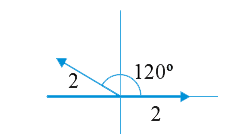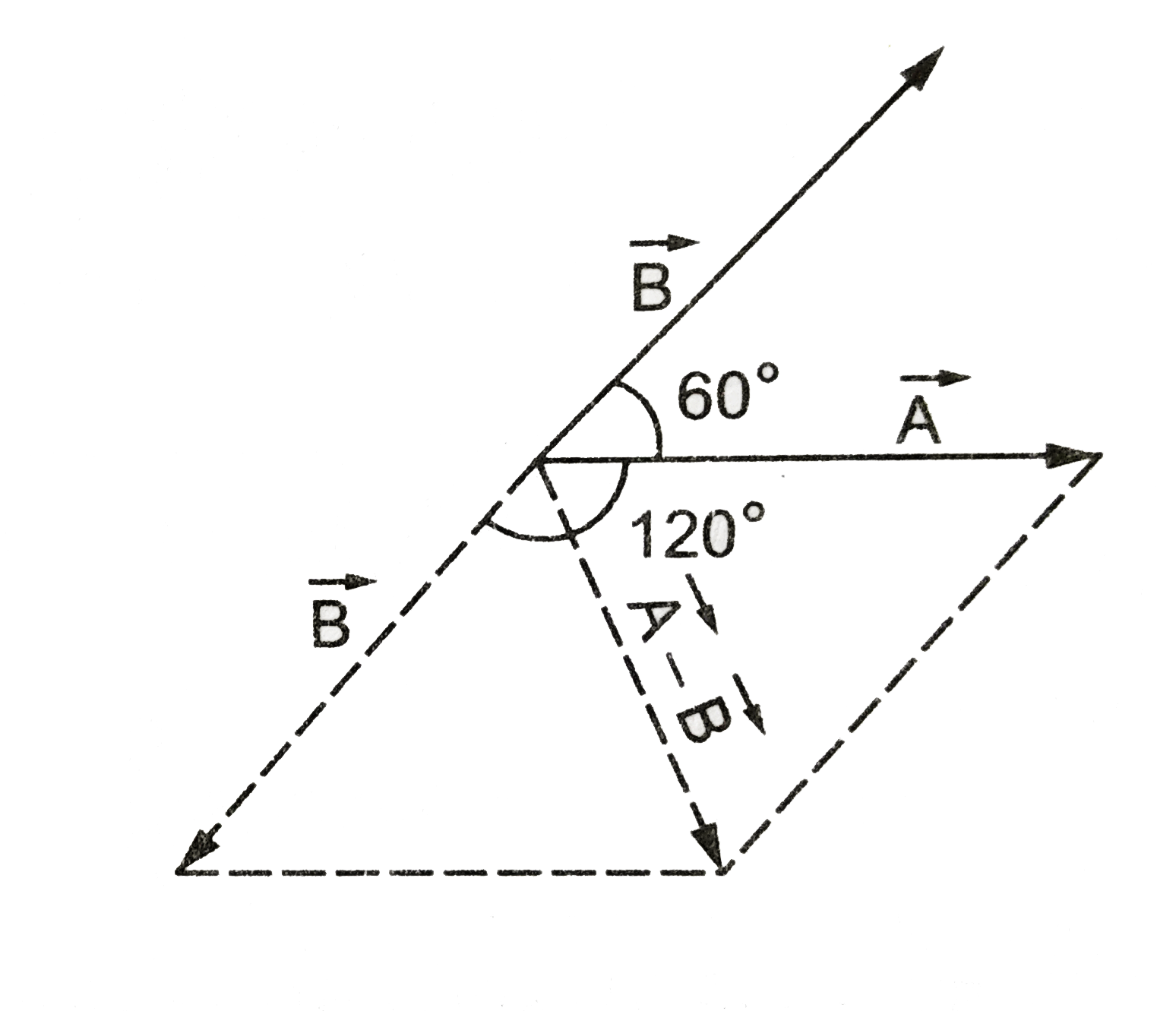Two vectors 3 units and 5 units are acting at 60∘ to each other .What is the magnitude and direction of the resultant ?
To solve the problem of finding the magnitude and direction of the resultant vector formed by two vectors of magnitudes 3 units and 5 units acting at an angle of 60 degrees to each other, we can follow these steps:
Step 1: Identify the given values
- Magnitude of vector P=3 units
- Magnitude of vector Q=5 units
- Angle between the vectors θ=60∘
Step 2: Use the formula for the magnitude of the resultant vector
The magnitude of the resultant vector R can be calculated using the formula:
R=√P2+Q2+2PQcos(θ)
Step 3: Substitute the values into the formula
Substituting the known values into the formula:
R=√32+52+2⋅3⋅5⋅cos(60∘)
Step 4: Calculate the squares and the cosine term
Calculating each term:
- 32=9
- 52=25
- cos(60∘)=12
Now substituting these values:
R=√9+25+2⋅3⋅5⋅12
=√9+25+15
=√49
=7 units
Step 5: Find the direction of the resultant vector
To find the angle α made by the resultant vector R with the direction of vector P, we can use the formula:
tan(α)=Qsin(θ)P+Qcos(θ)
Step 6: Substitute the values into the angle formula
Substituting the known values:
tan(α)=5⋅sin(60∘)3+5⋅cos(60∘)
Step 7: Calculate the sine and cosine terms
Calculating the sine and cosine:
- sin(60∘)=√32
- cos(60∘)=12
Now substituting these values:
tan(α)=5⋅√323+5⋅12
=5√323+52
=5√3262+52=5√32112=5√311
Step 8: Calculate the angle α
Now, to find α:
α=tan−1(5√311)
Calculating this gives approximately:
α≈38.2∘
Final Result
- Magnitude of the resultant vector R=7 units
- Direction of the resultant vector α≈38.2∘ with respect to vector P
- Magnitude of vector P=3 units
- Magnitude of vector Q=5 units
- Angle between the vectors θ=60∘
The magnitude of the resultant vector R can be calculated using the formula:
R=√P2+Q2+2PQcos(θ)
Substituting the known values into the formula:
R=√32+52+2⋅3⋅5⋅cos(60∘)
Calculating each term:
- 32=9
- 52=25
- cos(60∘)=12
R=√9+25+2⋅3⋅5⋅12
=√9+25+15
=√49
=7 units
To find the angle α made by the resultant vector R with the direction of vector P, we can use the formula:
tan(α)=Qsin(θ)P+Qcos(θ)
Substituting the known values:
tan(α)=5⋅sin(60∘)3+5⋅cos(60∘)
Calculating the sine and cosine:
- sin(60∘)=√32
- cos(60∘)=12
tan(α)=5⋅√323+5⋅12
=5√323+52
=5√3262+52=5√32112=5√311
Now, to find α:
α=tan−1(5√311)
Calculating this gives approximately:
α≈38.2∘
- Magnitude of the resultant vector R=7 units
- Direction of the resultant vector α≈38.2∘ with respect to vector P
Topper's Solved these Questions
- VECTORS SCALARS ELEMENTARY CALCULUS Book:ICSEChapter:VECTORS SCALARS ELEMENTARY CALCULUS Exercise:ADDITIONAL SOLVED PROBLEMS
Explore 22 Videos
- VECTORS SCALARS ELEMENTARY CALCULUS Book:ICSEChapter:VECTORS SCALARS ELEMENTARY CALCULUS Exercise:EXAMPLES
Explore 26 Videos
- UNITSBook:ICSEChapter:UNITSExercise:MODULE 3 (SELECTED PROBLEMS)
Explore 38 Videos
- WAVESBook:ICSEChapter:WAVESExercise:From Musical Sound
Explore 10 Videos
Similar Questions
Find the magnitude and direction of the resultant of given vectors

View SolutionThe resultant of two vectors , having equal magnitudes E make an angle of 120∘ with each other . What is the magnitude and direction of the resultant ?
View SolutionTwo vectors having equal magnitudes A make an angle θ with each other. Find the magnitude and direction of the resultant.
View SolutionTwo vectors having equal magnitudes A make an angle θ with eahc other. Find the magnitude and direction of the resultant.
View SolutionTwo vectors having equal magnitude of 5 units, have an angle of 60∘ between them. Find the magnitude of their resultant vector and its angle from one of the vectors.

View Solution→A is a vector of magnitude 2.7 units due east . What is the magnitude and direction of vector 4 →A ?
View SolutionTwo vectors have magnitudes 3 unit and 4 unit respectively. What should be the angel between them if the magnitude of the resultant ils a. 1 unit, b. 5 unit and c. 7 unit.
View SolutionTwo vectors have magnitudes 3 unit and 4 unit respectively. What should be the angel between them if the magnitude of the resultant is (a). 1 unit (b). 5 unit and (c). 7 unit.
View SolutionTwo vectors of equal magnitude of 5 unit have an angle 600 between them. Find the magnitude of (a) the sum of the vectors and (b) the difference of the vectors.
 .
.  .
.
View SolutionA vector has component along the X-axis equal to 25 unit and along the Y-axis equl to 60 unit. Find the magnitude and direction of the vector.
View Solution

